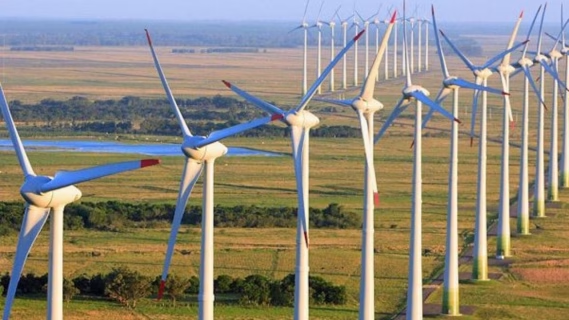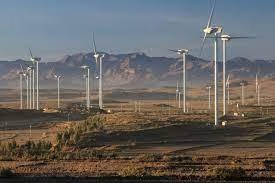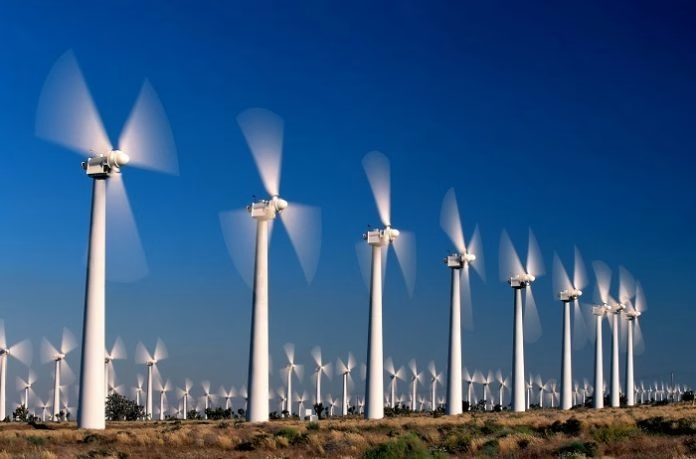The Lake Turkana Wind Power Project in Kenya was fully restored following the allocation of funds to rehabilitate the Loiyangalani–Suswa transmission line. The initiative, implemented by the Kenya Electricity Transmission Company (Ketraco), involved replacing six collapsed towers near Longonot and reconnecting two circuits to return the 400 kV line to full operation. The upgrade included new conductor stringing and the installation of Optical Ground Wire (OPGW) to enhance transmission stability and grid efficiency.
The restored capacity enables the evacuation of up to 300 megawatts (MW) of power from the Lake Turkana Wind Power Project, Africa’s largest wind farm. The development is expected to strengthen power reliability for households and businesses while boosting investor confidence in Kenya’s energy sector. It also aligns with the country’s broader renewable energy strategy, which includes the planned Kenya Wind Farm, designed to generate up to 1 gigawatt (GW) of clean energy, and complements other regional initiatives such as Ethiopia’s Aysha II Wind Farm.

Ethiopia has reached a significant milestone in its renewable energy expansion with the first phase of the Aysha II wind farm. Valued at $257.3 million, the project will deliver 80 megawatts of capacity which is already ready for commissioning. The report was issued by the Ethiopian Electric Power Generation Business Unit. The full project is expected to generate 120 megawatts. Construction, which started in February 2024, saw the installation of 32 turbines, a switchyard, and 30 residential units for staff. Furthermore, the second phase, covering the remaining 16 turbines at a cost of $69 million, is ongoing.
Project Factsheet
Significance:
- Restores full 300 MW evacuation capacity from Africa’s largest wind farm.
- Boosts reliability of Kenya’s electricity supply, supporting households and businesses.
- Strengthens investor confidence and aligns with Kenya’s Vision 2030 and climate commitments.
Infrastructure:
- Restoration of 400 kV Loiyangalani–Suswa transmission line.
- Six collapsed towers near Longonot replaced, with new conductor stringing and Optical Ground Wire (OPGW).
- Both circuits reinstated, enabling N-1 contingency and improved grid stability.
Developer/Consortium:
- Project executed by Kenya Electricity Transmission Company (KETRACO).
- Lake Turkana Wind Power contributes over 10% of Kenya’s national electricity supply.
- Backed by the Ministry of Energy, with oversight from Cabinet Secretary Opiyo Wandayi.
Funding/Timeline:
- Total restoration cost: KSh 207 million.
- Restoration completed in two phases: Circuit 1 energized on September 20, Circuit 2 on September 28.
- Permanent repairs replaced temporary bypasses, cutting maintenance costs and restoring full operational capacity.
The Scope of Implementation on the Lake Turkana Wind Power
The grid line restoration project on the Lake Turkana Wind Power has made it more reliable and dependable. Ketraco Acting Managing Director Kipkemoi Kibias said having both circuits running reinstates N-1 contingency. This means that the grid can withstand faults without major disruptions. “With both circuits now fully operational, we have restored the grid’s resilience and efficiency,” Wandayi noted. Furthermore, he added that it will reduce outages and cut costs previously incurred in maintaining temporary bypass infrastructure. The restoration was completed in two phases. Circuit 1 was energized on September 20.

Later, it was followed by Circuit 2 on September 28, marking full recovery of the transmission corridor. The Loiyangalani to Suswa line is a vital link for transmitting renewable energy from Marsabit County to the national grid. LTWP contributes more than 10 per cent of Kenya’s electricity supply. However, its collapse in recent years forced reliance on temporary bypasses that made the grid less stable and more expensive to maintain. Officials said completion of permanent repairs restores full operational capacity. Furthermore, it supports Kenya’s renewable energy plans under Vision 2030 and international climate commitments.

